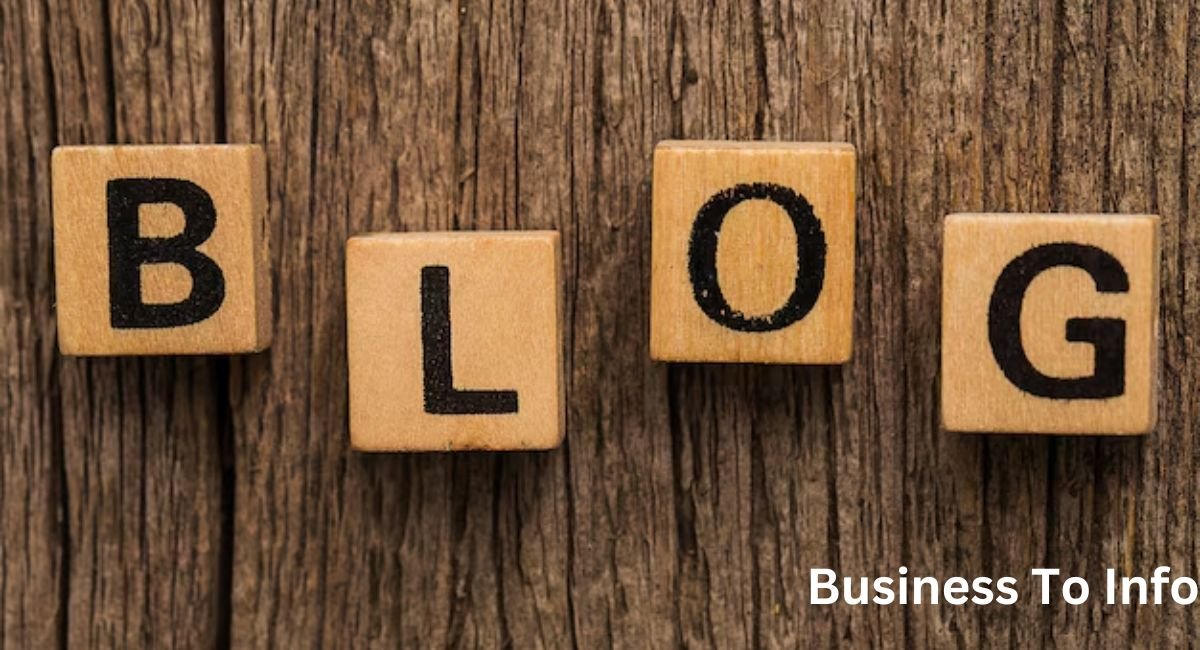The Beimeihuaren community, consisting of North American Chinese, has cultivated a vibrant cultural landscape that reflects the enduring traditions of their Chinese heritage. For generations, Beimeihuaren have worked diligently to preserve and pass down the rich customs, rituals, and festivals that define their identity, even as they adapt to life in North America. Cultural traditions are more than just ceremonies or events for Beimeihuaren; they represent a connection to their roots, an expression of community, and a bridge between the past and the present. In a rapidly changing world, maintaining these traditions is both a challenge and a source of pride for the Beimeihuaren community.
The Significance of Chinese Cultural Traditions
Why Cultural Traditions Matter to Beimeihuaren
Cultural traditions are the heart and soul of the Beimeihuaren community. They offer a way to honor their ancestors, celebrate their heritage, and instill a sense of belonging in future generations. For many Beimeihuaren, these traditions serve as a reminder of their origins, providing a link to the customs and values that have been passed down through centuries. Whether it’s through festivals, family rituals, or daily practices, cultural traditions help Beimeihuaren maintain a sense of continuity and identity in a foreign land.
The Role of Family in Preserving Cultural Heritage
Family plays a pivotal role in preserving cultural traditions among Beimeihuaren. From teaching children the significance of Lunar New Year customs to ensuring that language and rituals are passed down, families act as the primary custodians of cultural knowledge. Elders, in particular, hold a revered position in the transmission of traditions, guiding younger generations in understanding the importance of maintaining their heritage. This familial responsibility underscores the deep connection between Beimeihuaren cultural identity and family life, where traditions are not just celebrated but lived and nurtured.
Major Festivals Celebrated by Beimeihuaren
Lunar New Year: The Heart of Beimeihuaren Celebrations
The Lunar New Year, also known as Spring Festival, is the most significant and widely celebrated festival for Beimeihuaren. Marking the beginning of the lunar calendar, this festival is a time of renewal, family reunions, and honoring ancestors. Beimeihuaren celebrate with a variety of traditions, including the giving of red envelopes (hongbao), elaborate feasts, and the performance of lion dances. The emphasis on family unity during the Lunar New Year reinforces the community’s commitment to maintaining their cultural heritage, even in the diaspora.
Mid-Autumn Festival: A Celebration of Family and Harvest
The Mid-Autumn Festival is another important event for Beimeihuaren, celebrated on the 15th day of the eighth lunar month. Traditionally a time to give thanks for the harvest and to celebrate the full moon, this festival is also a moment for family gatherings. Mooncakes, a symbolic food of the festival, are shared among family members as a gesture of unity and continuity. For Beimeihuaren, the Mid-Autumn Festival is a reminder of the importance of family bonds and the cyclical nature of life.
Dragon Boat Festival: Honoring Tradition and Community
The Dragon Boat Festival, or Duanwu Festival, commemorates the ancient Chinese poet Qu Yuan and is celebrated on the fifth day of the fifth lunar month. For Beimeihuaren, this festival is a time to honor tradition and community through dragon boat races, the preparation of sticky rice dumplings (zongzi), and other cultural activities. The festival serves as a testament to the enduring power of cultural traditions, bringing together Beimeihuaren communities in cities across North America to celebrate their shared heritage.
Rituals and Customs Passed Down Through Generations
Ancestor Worship and Qingming Festival
Ancestor worship is a cornerstone of Chinese cultural practices, and it remains a vital tradition for Beimeihuaren. The Qingming Festival, also known as Tomb-Sweeping Day, is an occasion for families to honor their ancestors by visiting gravesites, offering food and incense, and performing rituals to show respect. This practice underscores the deep reverence that Beimeihuaren hold for their ancestors and the importance of maintaining a connection to the past.
Traditional Wedding Customs Among Beimeihuaren
Traditional wedding customs are another important aspect of Beimeihuaren culture. From elaborate tea ceremonies to the exchange of symbolic gifts, these rituals reflect the deep-rooted values of family, respect, and harmony. While many Beimeihuaren couples may opt for Western-style weddings, incorporating traditional Chinese elements into the ceremony is a way to honor their cultural heritage and ensure that these customs are passed down to future generations.
Birth and Child-Rearing Traditions in the Beimeihuaren Community
Child-rearing customs are also steeped in tradition within the Beimeihuaren community. From the celebration of the “Red Egg and Ginger Party” to mark a baby’s first month to the emphasis on education and filial piety, these practices reflect the community’s values and priorities. For Beimeihuaren families, raising children with an understanding of their cultural heritage is crucial to ensuring that these traditions continue to thrive in future generations.
The Evolution of Beimeihuaren Traditions in a Western Context
Adapting Chinese Traditions to North American Life
Living in North America presents unique challenges and opportunities for Beimeihuaren as they adapt their cultural traditions to a new context. While many customs are preserved in their original form, others have evolved to fit the realities of life in a Western society. For example, the timing of certain festivals may be adjusted to accommodate work schedules, and traditional practices may be simplified or modified to suit modern lifestyles. This adaptability allows Beimeihuaren to maintain their cultural identity while also integrating into North American society.
The Fusion of Western Holidays with Chinese Customs
One of the ways in which Beimeihuaren navigate their dual identities is by blending Chinese traditions with Western holidays. For example, it is not uncommon for Beimeihuaren families to celebrate Christmas with a Chinese twist, incorporating traditional foods and customs into the festivities. This fusion of holidays allows Beimeihuaren to embrace their bicultural identity, creating new traditions that reflect their unique experiences as North American Chinese.
Generational Differences in Cultural Practices
As with any diaspora community, generational differences play a significant role in how cultural traditions are practiced and preserved. While older generations may adhere strictly to traditional customs, younger Beimeihuaren often find themselves navigating a balance between cultural preservation and assimilation. This can lead to variations in how traditions are observed, with younger generations sometimes adopting a more flexible or hybrid approach. Despite these differences, the underlying values of family, respect, and cultural continuity remain central to Beimeihuaren identity.
Language as a Cultural Anchor for Beimeihuaren
The Importance of Mandarin and Cantonese in Cultural Preservation
Language is a powerful tool for cultural preservation, and for Beimeihuaren, the use of Mandarin, Cantonese, or other Chinese dialects is a key aspect of maintaining their heritage. Speaking the language not only allows Beimeihuaren to connect with their roots but also enables them to participate fully in cultural traditions that are deeply intertwined with linguistic expression. Whether through daily communication or in the context of festivals and rituals, language serves as a cultural anchor that helps to preserve the Beimeihuaren identity.
Bilingualism and Language Shifts Across Generations
As Beimeihuaren families settle in North America, bilingualism often becomes a norm, with English becoming the dominant language for younger generations. While this shift reflects the realities of assimilation, it also raises concerns about the potential loss of Chinese language skills over time. However, many Beimeihuaren families make concerted efforts to ensure that their children remain fluent in Mandarin or Cantonese, recognizing the importance of language in preserving their cultural identity.
Community Schools and Language Programs for Beimeihuaren Youth
To support language preservation, many Beimeihuaren communities have established Chinese language schools and programs that cater to youth. These schools offer classes in Mandarin, Cantonese, and Chinese cultural studies, providing a structured environment for young Beimeihuaren to learn about their heritage. By investing in language education, Beimeihuaren families are ensuring that their cultural traditions continue to thrive in future generations.
The Role of Food in Beimeihuaren Cultural Identity
Traditional Chinese Cuisine in Beimeihuaren Homes
Food is an essential aspect of Beimeihuaren culture, serving as a means of connecting with their heritage and sharing their traditions with others. Traditional Chinese cuisine, with its rich variety of flavors and regional specialties, is a cornerstone of Beimeihuaren homes. From dim sum to hot pot, Beimeihuaren families take pride in preparing and sharing these dishes, which are often accompanied by stories and rituals that reinforce cultural values.
The Significance of Food in Festivals and Rituals
Food plays a central role in Beimeihuaren festivals and rituals, where specific dishes are prepared to mark important occasions. For example, during the Lunar New Year, certain foods such as dumplings, fish, and nian gao (sticky rice cake) are eaten for their symbolic meanings, representing prosperity, abundance, and longevity. These culinary traditions are passed down through generations, ensuring that the cultural significance of food remains an integral part of Beimeihuaren identity.
The Evolution of Chinese Cuisine in North America
Chinese cuisine has also evolved in North America, reflecting the fusion of traditional flavors with local ingredients and Western influences. This evolution is evident in the rise of “Chinese-American” cuisine, which includes popular dishes like General Tso’s chicken and chop suey that were created to suit Western tastes. While these dishes differ from their traditional counterparts, they represent an important aspect of the Beimeihuaren experience, showcasing the community’s adaptability and creativity in preserving their culinary heritage.
Artistic Expressions in Beimeihuaren Culture
Calligraphy, Painting, and Chinese Folk Arts
Artistic expression is another vital aspect of Beimeihuaren culture, with traditional Chinese arts such as calligraphy, painting, and folk crafts serving as important cultural symbols. These art forms, which emphasize balance, harmony, and precision, are often taught to younger generations as a way of preserving cultural values. For many Beimeihuaren, engaging in these artistic practices is not only a way to connect with their heritage but also a form of self-expression and creativity.
Beimeihuaren Representation in Modern Art and Media
In addition to traditional art forms, Beimeihuaren have made significant contributions to modern art and media, using these platforms to express their cultural identity and challenge stereotypes. From visual artists who explore themes of diaspora and belonging to filmmakers who bring Chinese stories to the global stage, Beimeihuaren are making their mark in the world of contemporary art. These artistic expressions offer a powerful way for Beimeihuaren to share their experiences and perspectives with a wider audience.
Music and Dance as Cultural Expressions
Music and dance also play an important role in Beimeihuaren culture, with traditional forms such as Chinese opera, folk dances, and instrumental music being performed at festivals and community events. These cultural expressions serve as a means of preserving and sharing Chinese heritage, while also allowing Beimeihuaren to engage with their cultural roots in a dynamic and interactive way. Whether through classical performances or modern adaptations, music and dance continue to be vibrant expressions of Beimeihuaren identity.
Challenges in Preserving Beimeihuaren Cultural Traditions
The Impact of Assimilation on Cultural Preservation
One of the key challenges facing the Beimeihuaren community is the impact of assimilation on cultural preservation. As Beimeihuaren families integrate into North American society, there is a risk that traditional customs and practices may be lost or diluted over time. This is particularly true for younger generations, who may feel less connected to their cultural heritage as they navigate the pressures of fitting in with mainstream society. Preserving Beimeihuaren traditions requires a delicate balance between embracing new experiences and maintaining a strong connection to one’s roots.
Overcoming Stereotypes and Misconceptions About Chinese Culture
Another challenge that Beimeihuaren face is the prevalence of stereotypes and misconceptions about Chinese culture. From the exoticization of Chinese customs to the oversimplification of complex traditions, these stereotypes can hinder the community’s efforts to preserve and share their heritage. Overcoming these misconceptions requires education, advocacy, and cultural exchange, allowing Beimeihuaren to take control of their narrative and showcase the richness and diversity of their cultural traditions.
The Role of Technology in Preserving Cultural Traditions
Technology offers new opportunities for preserving and sharing Beimeihuaren cultural traditions. From online platforms that connect diaspora communities to digital archives that document cultural practices, technology is playing an increasingly important role in cultural preservation. For Beimeihuaren, leveraging these tools can help ensure that their traditions are passed down to future generations, even as they adapt to the changing world around them.
The Future of Beimeihuaren Cultural Traditions
Empowering the Next Generation to Continue Cultural Practices
The future of Beimeihuaren cultural traditions lies in the hands of the next generation. Empowering young Beimeihuaren to embrace their cultural heritage, while also giving them the freedom to adapt and reinterpret traditions in ways that resonate with their experiences, is key to ensuring that these customs continue to thrive. Education, mentorship, and community support will all play a vital role in helping the next generation carry forward the cultural legacy of Beimeihuaren.
The Role of Community Organizations in Cultural Preservation
Community organizations are essential in supporting the preservation of Beimeihuaren cultural traditions. From cultural centers that host festivals and events to language schools that teach Mandarin and Cantonese, these organizations provide a vital infrastructure for cultural continuity. By fostering a sense of community and belonging, these organizations help ensure that Beimeihuaren cultural traditions remain a vibrant and integral part of North American society.
The Global Influence of Beimeihuaren Cultural Traditions
As Beimeihuaren continue to make their mark on North American society, their cultural traditions are also gaining global recognition. From the popularity of Chinese festivals to the influence of Chinese cuisine and art, Beimeihuaren traditions are becoming an increasingly visible and celebrated part of the global cultural landscape. This growing recognition not only helps to preserve these traditions but also highlights the important contributions that Beimeihuaren have made to the cultural richness of the world.
Reflecting on the Cultural Legacy of Beimeihuaren
The cultural traditions of Beimeihuaren are a testament to the resilience and creativity of the North American Chinese community. From festivals and rituals to language and art, these traditions offer a powerful way for Beimeihuaren to connect with their heritage and share their unique experiences with the world. While challenges remain in preserving these customs, the future is bright, with the next generation poised to carry forward the cultural legacy of Beimeihuaren. As they navigate the complexities of life in North America, Beimeihuaren continue to enrich the cultural fabric of the continent, ensuring that their traditions remain a vital and enduring part of their identity.
FAQs
What are some important cultural traditions for Beimeihuaren?
Important cultural traditions for Beimeihuaren include celebrating the Lunar New Year, Mid-Autumn Festival, and Dragon Boat Festival, as well as practicing ancestor worship and participating in traditional customs like weddings and child-rearing rituals.
How do Beimeihuaren preserve their cultural traditions in North America?
Beimeihuaren preserve their cultural traditions through family practices, community events, language education, and the adaptation of customs to fit their North American context. Community organizations and cultural centers also play a crucial role in supporting these efforts.
What role does food play in Beimeihuaren cultural identity?
Food is a central aspect of Beimeihuaren cultural identity, with traditional Chinese cuisine being an important part of family life, festivals, and rituals. Sharing and preparing traditional dishes helps to preserve cultural values and connect Beimeihuaren with their heritage.
How has Beimeihuaren culture evolved in North America?
Beimeihuaren culture has evolved in North America through the blending of Chinese traditions with Western influences. This fusion is seen in the adaptation of holidays, language shifts, and the creation of new cultural expressions that reflect the bicultural experience of Beimeihuaren.
What challenges do Beimeihuaren face in preserving their cultural traditions?
Challenges include the impact of assimilation, generational differences in cultural practices, and overcoming stereotypes and misconceptions about Chinese culture. However, community support, education, and technology are helping to address these challenges.
What does the future hold for Beimeihuaren cultural traditions?
The future of Beimeihuaren cultural traditions is bright, with the next generation poised to continue these practices while adapting them to their unique experiences. Community organizations, education, and global recognition of Beimeihuaren culture will also play a key role in preserving these traditions for future generations.



